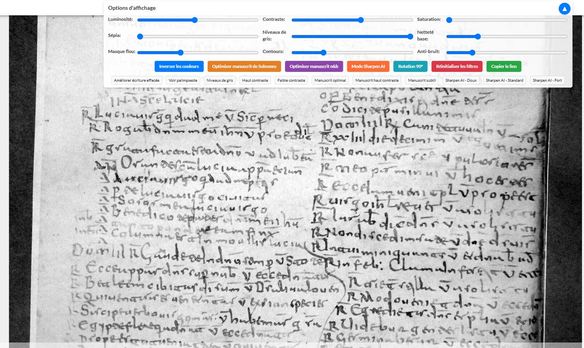The REPERTORIUM project is delighted to announce a new wave of manuscript releases that further enrich our open-access digital collection of medieval liturgical music. This update features not only important additions from England and Italy, but also signals several major milestones—both in terms of quantity and musicological significance.
Crossing 1,000 Manuscripts from Solesmes: A Major Digital Milestone
With the publication of our most recent items, we are proud to report that over 1,000 manuscripts from the Atelier de Paléographie Musicale at Solesmes are now available online through the MMMO platform for the REPERTORIUM project. This vast photographic legacy, initiated by the Benedictine monks in the early 20th century, has become one of the most important visual archives for medieval chant studies.

Our work continues to bring these invaluable resources into public view for scholars, singers, and digital humanists. Each digitization not only preserves a fragile visual history but also provides a foundation for new forms of analysis across repertories and regions.
Two Exceptional Online Releases
This update also includes two extraordinary additions to our core collection:
- The Lucca Antiphonary (late 8th century): This is one of the earliest surviving Office books in the Latin West, a key witness to pre-Carolingian liturgical practice. Its notation and layout offer precious insight into early chant traditions before standardization.
- The Wilton Processional: A rare English manuscript, this processional captures a unique selection of chants used in liturgical movement and ritual. Its inclusion expands our coverage of English usage, especially for feasts and local observances.
These two sources exemplify the REPERTORIUM’s mission: not just to digitize large collections, but to identify and publish underrepresented or foundational manuscripts that reshape how we view chant history.
Featured Source: Worcester F 160 – Complete at Last
The Worcester F 160 manuscript, long recognized as a cornerstone of 13th-century English chant, is now available in full. Previously known only through the 1922 Solesmes facsimile (Paléographie musicale, vol. XII), only part of this massive antiphoner had been accessible until now.
Thanks to the complete digitization of the original Solesmes photographs, the manuscript—including its kyriale and extensive gradual—can now be viewed online in its entirety.
Copied shortly after 1230, F 160 contains:
- Antiphonary
- Hymnary
- Processional
- Psalmist
- Tonary
- Gradual and Kyriale (newly available, ff. 294 onward)
Its Anglo-Norman square notation on red four-line staves reflects an English scribal and musical tradition closely tied to Worcester Cathedral. The manuscript’s careful layout and distinctive repertory make it essential for anyone studying the transmission and local adaptation of liturgical chant in medieval England.
📖 View Worcester F 160: https://musmed.eu/source/15185
Chant at the Crossroads: Ivrée LX and CVI
We also highlight two lesser-known but profoundly interesting sources from Ivrée, both preserved in the Biblioteca Capitolare d’Ivrée and now published online for the first time:
- Ivrée LX (link) contains a Breton gradual copied with Italianate neumes. This hybrid witness illustrates the dynamic adaptation of repertory across regional boundaries. As Michel Huglo observed, “le modèle était breton, mais la main… italienne.”
- Ivrée CVI (link) is a rich antiphonary listed in Dom Hesbert’s Corpus Antiphonalium Officii, now fully visible thanks to the Solesmes photographic archives.
These manuscripts not only complicate tidy regional labels but also highlight the role of photography in preserving endangered sources for modern research.
Southern Italian Witness: Benevento 33
Another major source now fully indexed in the MMMO database is Benevento 33, a 10th–11th century missal written in diastematic Beneventan notation. Newly indexed by Cristina Alís Raurich, it offers:
- A complete ordo missae
- Unique marginalia and annotations from later centuries
- Regional saints and texts, including Bartholomew of Lipari
- A rare ordo baptismi
📖 View Benevento 33: https://musmed.eu/source/8801
New Perspectives: The Chiavenna Antiphoner
In our ongoing quest to uncover lesser-known chant traditions, we are proud to present the Chiavenna Antiphoner (11th century), now available online through Repertorium.
“Vers un Antiphonale Triplex ?”
This manuscript, notated in Lotharingian (Messine) script, represents an extremely rare witness to the Office in Messine notation—opening new perspectives on regional liturgical expression and musical paleography.
Thanks to the century-old Solesmes photographs, this fragile source is now preserved and publicly available for the first time.
📖 Read more in our new article by Dominique Gatté: Vers un Antiphonale Triplex ?
Explore the Collection
Each of these sources reflects the REPERTORIUM project’s dual commitment: to preserve the visual heritage of chant and to facilitate new research across linguistic, geographic, and notational boundaries.
Browse our full database: https://musmed.eu/sources




